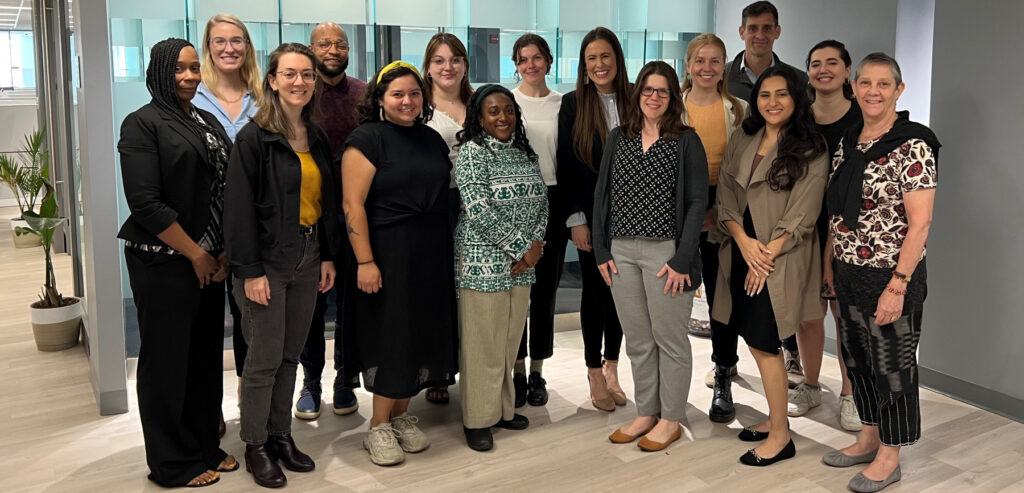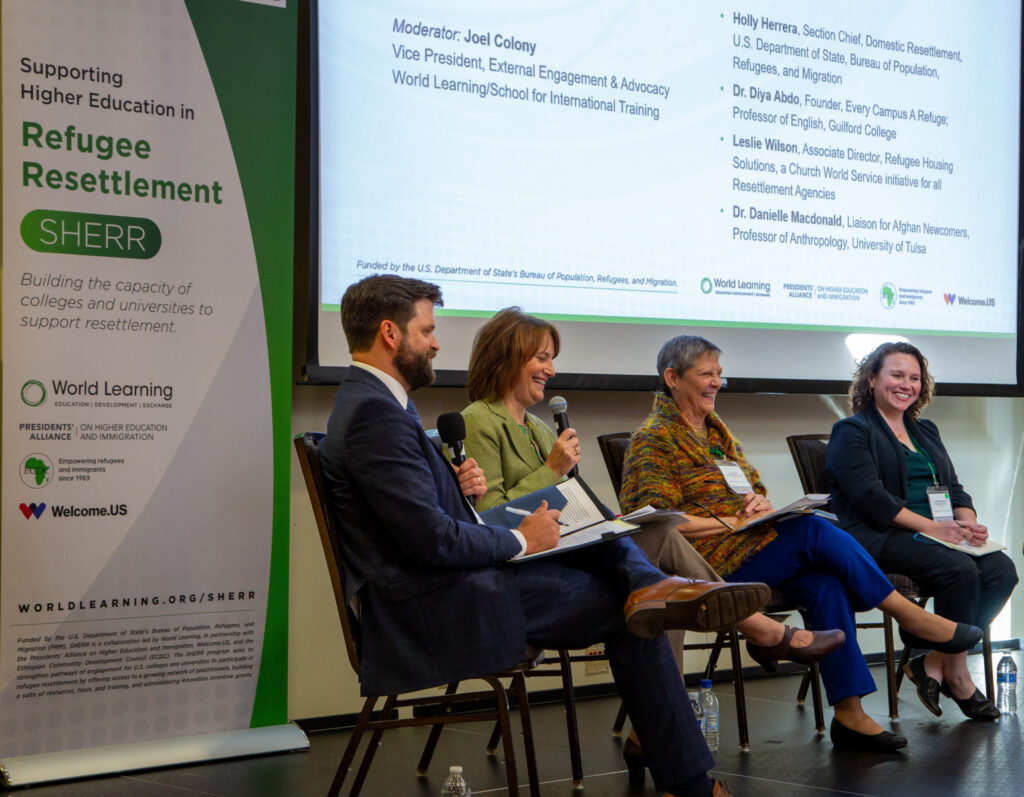- Related Stories
- November 21, 2023
Refugee Housing Solutions: A Thanksgiving Reflection
This blog from RHS Associate Director for Special Projects Leslie Wilson recaps recent engagement opportunities for cross-sector knowledge sharing and collaboration in the face of housing challenges.
During October and November, I was privileged—and inspired—to join several gatherings to uplift the opportunity for Americans to warmly and creatively welcome refugees and other newcomers who have arrived in the United States. Since the summer of 2021 when, alongside other refugees, Afghans came to the U.S. in significant numbers, they have been followed by Ukrainians fleeing war and Venezuelans, Cuban, Haitians and Nicaraguans who have been prioritized for American protection as increasingly dangerous leadership and governance crises have led to danger in their respective countries.
In addition to these tens of thousands of women, men, children and young adults, who are in the U.S. on humanitarian grounds, there are about 9,573 unaccompanied children who are in the proactive care of the U.S. Department of Health and Human Services and who have high hopes of being reunited with family members or introduced to other Americans willing and qualified to care for them and protect them. There are also more than 5.4 million people who have left their country and are seeking protection from persecution and serious human rights violations, who are, in fact, seeking asylum as they are entitled to do in international law. Finally, the millions of people who enter the county and are here as undocumented wanderers or migrant workers often take on jobs and tasks that employers cannot find American-born citizens or other legal U.S. residents to do.
With this rather lengthy introduction made, I was inspired by the people from myriad backgrounds and life journeys who came together to imagine how our country, in all its abundance and generosity of spirit and despite many domestic challenges and unprecedented divisiveness, might continue welcoming newcomers as our forebears welcomed our families and friends.
At the Every Campus A Refuge (ECAR) gathering in Winston-Salem, North Carolina, at the University of Notre Dame’s third annual Church Properties Initiative in South Bend, Indiana and at the Supporting Higher Education in Refugee Resettlement (SHERR) workshop in College Park, Maryland, I was made hopeful even in the face of a seemingly hopeless situation: helping tens of thousands of newcomers secure dignified, affordable housing as the foundation for their new lives in America.
The situation was summarized in a recent research paper from the Refugee Housing Solutions team at Church World Service:
“Prior to the current housing crisis, which predates the COVID-19 crisis by many years, generally, there was adequate housing stock throughout the United States. In recent years, available and affordable housing has diminished at record rates. According to a 2022 National Public Radio (NPR) report … homeownership [has become] unaffordable for millions of Americans.” The biggest factor in this current dynamic is the historic rental housing shortage that is plaguing us…strong demand and low supply mean higher prices. This situation presents a bigger issue for vulnerable and low-income populations than it does for those with financial resources, including credit and employment histories. But solidly middle-income Americans are also affected by the current housing crisis, which is a stark change from past decades. The bleak situation for citizens and long-time U.S. residents who are renters makes the situation refugees and newcomers are experiencing…even more deeply challenging. According to economist Mark Zandi of Moody Analytics…the U.S. needs to build millions of houses and rental units to address the shortage. To help ensure that some new housing is affordable, whether rented or owned, one must ask and answer the question, “What does affordability look like?” for groups and individuals such as the working poor, those once thought to be middle class and other vulnerable people, including refugees and immigrants.
As I listened to panel presentations and follow-up Q&A sessions, watched inspiring films about resettled refugee families, listened to heartbreaking poetry from immigrants and talked during morning coffee and mid-afternoon breaks, the complexity and risks of housing as many as 150,000 new refugees and parolees—never mind hundreds of asylum seekers being bussed from southern states to northern ones and abandoned to the streets of big cities—was front and center in everyone’s mind. Yet, I also heard hope-filled stories about housing and other generous support for refugees in college and university campus dormitories and graduate student or faculty houses, in repurposed convents, pastors’ manses and nursing homes, in Airbnbs and hotel suites and in neighborhood homes purchased for rehabilitation.
So, as I said to the one hundred or so colleagues gathered for the closing afternoon session of the SHERR workshop, I am hopeful that we can rise to the challenge–and the opportunity–at hand in our communities and cities nationwide. I am certain this will be very difficult. We will misstep and fail in some housing experiments, but we will doggedly move forward and succeed with others. We will keep the American dream and promise alive—for ourselves and our new neighbors alike.
Leslie Wilson is CWS’ Associate Director for Special Projects, U.S. Programs. To learn more about Refugee Housing Solutions, visit the CWS or Refugee Housing Solutions websites.
This blog was funded in part by a grant from the United States Department of State. The opinions, findings and conclusions stated herein are those of the author and do not necessarily reflect those of the United States Department of State.



